Do Termites Like Light? Flying Termites’ Attraction to Light
Termites typically avoid light as they are photosensitive, preferring dark and damp environments. Light exposure can cause them to become stressed and seek shelter in darker areas. Illuminating infested areas with bright lights can help in detecting termite activity, as they will scurry away from the light source. This behavior showcases their aversion to light.
Light exposure can disrupt termites’ foraging patterns and nesting habits, leading them to retreat deeper into hidden locations within structures. This avoidance of light aids in understanding their behavior and developing effective pest control strategies.
Key Takeaways
- Understanding termite behavior is crucial in managing infestations effectively.
- Winged termites and flying insects indicate a mature colony ready to reproduce and establish new colonies.
- Light attracts flying insects like termites during swarming season due to their natural navigational instincts.
- Swarming behavior is a sign of an active and potentially damaging termite presence.
- Biological factors, such as phototaxis, play a significant role in termites’ attraction to light.
- To prevent termite attraction to light, minimize outdoor lighting near structures and use yellow insect-proof bulbs to protect the house from flying termites.
Decoding Termite Behavior
Role of Alates
Subterranean termites produce alates, also known as swarmers, which are winged reproductive termites. These alates play a crucial role in termite colonies, as they are responsible for reproduction and forming new colonies. Alates, flying termites, emerge from mature termite colonies during the swarming season to mate and establish new nests.
I have observed that alates are attracted to light sources, making them more visible during their swarming flights. This behavior aids in dispersing the termite population and increasing the chances of successful colony establishment.
Contribution of Swarmers
Termite swarmers, also known as flying termites, contribute significantly to the survival and expansion of the colony. After mating, flying termites, swarmers shed their wings and pair up to form new colonies. This process ensures genetic diversity within the colony, enhancing its resilience against environmental threats.
My personal experience has shown that termite swarmers are adept at locating suitable nesting sites rich in food sources, such as wood. Their ability to establish new colonies swiftly contributes to the overall success of termite populations.
Factors Influencing Success
Several factors influence the success rate of termite swarmers, including environmental conditions, availability of resources, and competition from other termite colonies. Subterranean termites rely on favorable conditions like moisture levels and temperature for successful swarming activities.
In my observations, I have noticed that termite swarmers face challenges such as predators and natural disasters that can impact their ability to establish new colonies effectively.
Understanding Winged Termites

Alates Characteristics
Winged termites, also known as alates, are reproductive termites that have wings. These winged insects are responsible for starting new termite colonies. Alates typically emerge in large numbers during termite swarms.
Alates are equipped with two pairs of wings that are equal in size, distinguishing them from other termites within the colony. Their bodies are dark-colored, and they have straight antennae. During a swarm, alates fly out of their nests in search of mates to reproduce and establish new colonies.
I remember observing a termite swarm during a humid summer evening. The air was filled with flying insects, creating a mesmerizing sight as they fluttered around streetlights and outdoor lamps.
Swarm Behavior
During a swarm, alates are attracted to light sources such as streetlights and windows. This behavior leads them towards artificial lights instead of dispersing naturally into the environment. Once they find a suitable mate, they shed their wings and pair up to start a new colony together.
The sight of swarming termites can be unsettling for homeowners, signaling a potential termite problem in or around the property. It is crucial to address any signs of termite activity promptly to prevent further damage to the structure.
Reproduction Significance
Alates play a vital role in the reproduction process of termites by establishing new colonies. Once mated, the female alate becomes the queen of the new colony while the male becomes her king. They work together to build and expand their subterranean termite nest underground.
Observing termite behavior firsthand can provide valuable insights into their habits and preferences, aiding in effective pest control strategies.
Light Attraction Explained
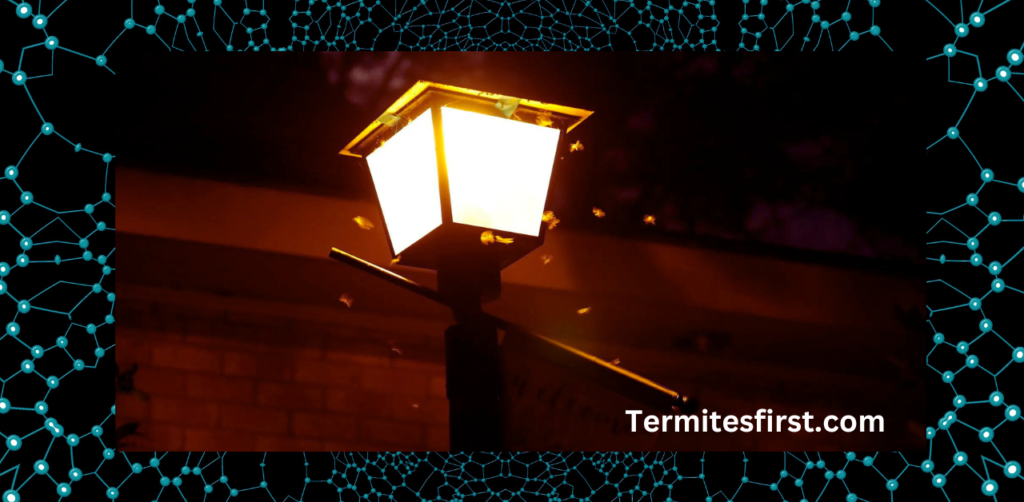
Termites’ Response
Termites are naturally drawn to light sources, which can confuse and disorient them. This attraction often leads termites to swarm around artificial lights, mistaking them for the moon or sunlight.
Illuminated areas can disrupt termite behavior, causing them to emerge from their colonies and gather around light fixtures. This response is particularly evident during termite swarming events when winged termites are searching for mates to establish new colonies.
During a termite swarm, leaving lights on can help in two ways: Firstly, it may attract the termites towards the light source, making it easier to detect an infestation. Secondly, it can deter termites from entering dark areas of a property where they might establish new colonies.
Impact on Infestations
The relationship between light and termite behavior highlights how crucial proper lighting can be in identifying and managing termite infestations. By understanding this attraction to light, homeowners can strategically use lighting to monitor termite activity and take preventive measures.
In my experience dealing with a termite infestation, I found that keeping outdoor lights on at night helped in spotting termite swarms near my home’s foundation. This proactive approach enabled me to address the issue promptly before significant damage occurred.
Swarming Behavior Unveiled
Survival Challenges
Termite swarmers face numerous survival challenges during their mass flight to find a mate and establish a new colony. These fragile insects are exposed to predators, weather conditions, and other risks.
As they take flight, termite swarmers are vulnerable to being eaten by birds, bats, and other predators. Their delicate wings can easily get damaged, leaving them defenseless against these threats. Exposure to harsh weather conditions such as wind or rain can significantly reduce their chances of survival.
Timing and Conditions
The timing and environmental conditions play a crucial role in the success of termite swarms. These events typically occur during warm, humid evenings after rainfall when the air is still. This optimal combination of factors ensures that the swarmers have the best chance of finding a suitable mate and establishing a new colony successfully.
During my own experience dealing with a termite infestation at home, I learned that identifying these swarms early is key to preventing further damage. By recognizing the warning signs and seeking professional inspection promptly, you can avoid significant structural harm caused by these destructive pests.
Biological Reasons for Light Attraction
Evolutionary Benefits
Termites are naturally drawn to light sources due to their evolutionary programming. This behavior is rooted in the insects’ instinctual response to natural light.
I find it fascinating that, over time, termites have developed a strong affinity for artificial light, which aids in their navigation and communication within colonies.
Dispersal of Colonies
The attraction to light serves a crucial role in the dispersal of termite colonies. By gravitating towards light sources, termites can locate new areas for colonization and expansion.
In my experience, observing this behavior firsthand highlights the significance of light attraction in the survival and growth of termite populations.
Impact of Light on Termite Activity
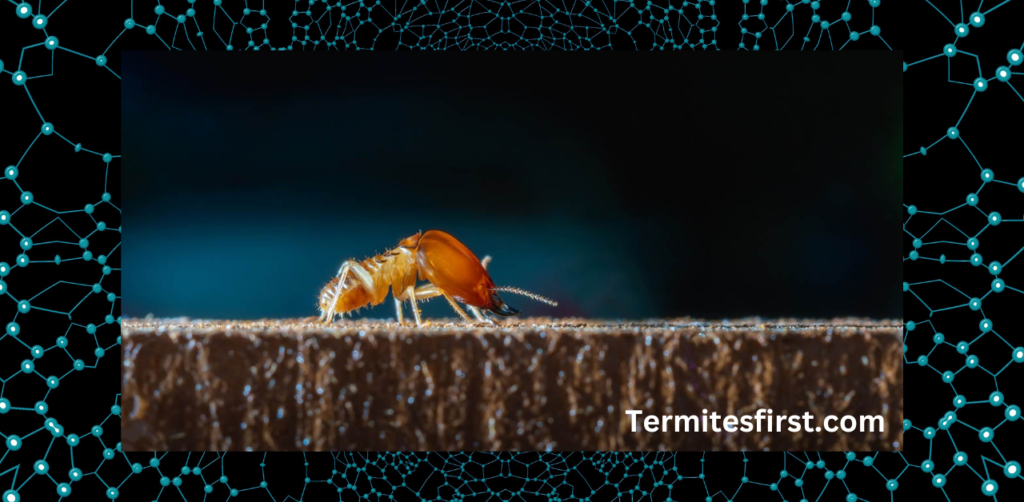
Foraging Behavior
Humidity levels play a crucial role in termite foraging behavior, with light also being a significant factor. Termites are typically attracted to light sources, leading them to areas where light is present. This behavior can be detrimental as it may expose termites to predators and other threats.
Termites tend to avoid direct exposure to light due to their preference for dark, damp environments. However, artificial light sources can disrupt their natural behavior patterns, causing them to emerge during daylight hours. This increased activity can result in greater damage to wooden structures within homes and buildings.
Infestation Detection
Light exposure can aid in the detection of termite infestations within a property. By strategically placing light sources near potential entry points or infested areas, homeowners and pest control professionals can observe termite activity more easily. This method can help in identifying the extent of the infestation and implementing appropriate treatment measures.
Pros:
- Enhanced visibility for detecting termite presence.
- Facilitates monitoring of termite activity in specific areas.
Cons:
- Increased termite activity due to artificial light.
- Potential disruption of natural behaviors leading to further damage.
Managing Termite Attraction to Light
Light Management
Limiting outdoor light sources around structures can help minimize termite attraction. Using yellow or sodium vapor lights instead of white lights can also reduce their presence.
I often find that keeping my outdoor lights dimmed at night not only helps save energy but also prevents attracting termites near my home. It’s a simple yet effective way to manage their activity without using harmful chemicals.
Preventive Measures
Sealing cracks and crevices, especially around windows and doors, can prevent termites from swarming into buildings. Regularly inspecting and repairing any leaks in plumbing can also reduce moisture levels that attract termites.
In my experience, I’ve noticed that maintaining proper ventilation in crawl spaces and attics can significantly deter termite infestations. Ensuring there are no damp areas where termites thrive is crucial for long-term prevention.
Control Efforts
Implementing barriers like gravel or rocks between structures and soil can create a physical deterrent for termites. Installing termite bait stations around the perimeter of buildings can help monitor and control their presence effectively.
I have found that regularly trimming vegetation near my home, such as bushes and trees, not only improves curb appeal but also reduces potential pathways for termites to access the structure. This simple step has proven to be an essential part of my termite control strategy.
Preserving Structures from Termite Swarms
Protection Methods
To safeguard buildings from termite swarms, it is crucial to employ preventative measures. One effective method is creating a barrier around the structure using termite-resistant materials. Regular inspections can help detect any signs of termite infestation early on.
I always recommend keeping woodpiles and debris away from the house to reduce the risk of attracting termites. Ensuring proper ventilation in crawl spaces can also discourage termite colonies from settling near your home.
Importance of Early Detection
Early detection plays a vital role in termite control as it allows for timely intervention to prevent extensive damage. Monitoring areas prone to termite activity, such as basements and attics, can help identify any issues promptly.
Personally, I have found that scheduling annual inspections by pest control professionals can provide peace of mind and ensure any potential termite problems are addressed promptly.
Safeguarding Against Infestations
In addition to regular inspections, sealing cracks and crevices in the foundation can help prevent termites from entering the building. Using treated wood for construction projects and maintaining proper drainage around the property are also effective ways to safeguard structures against termite infestations.
Remember, a proactive approach to termite prevention is key to preserving the integrity of your home and avoiding costly repairs down the line.
Conclusion:
Understanding termite behavior, especially their attraction to light, is crucial in managing and preventing infestations. Winged termites are drawn to light for biological reasons, which impact their swarming behavior and activity levels. By comprehending these factors, we can implement strategies to deter termites from structures and safeguard against potential damage.
In conclusion, being proactive in addressing light attraction in termites can significantly reduce the risk of infestations. Regular inspections, minimizing outdoor lighting near buildings, and sealing entry points are practical steps to mitigate termite activity. Remember, prevention is key in termite control – stay informed and take necessary precautions to protect your property from these destructive pests.
FAQ’s:
Termites are attracted to light, especially winged termites, during swarming season. Artificial lights can disrupt their natural behavior and lead them towards structures.
Light affects termite behavior by attracting them towards artificial sources, leading to increased activity near buildings. Managing light sources can help reduce the risk of infestations.
Termites are drawn to light as it aids in navigation during swarming and mating seasons. Light triggers their dispersal instincts, guiding them toward potential mates and new colonies.
Property owners can minimize termite attraction by using yellow or sodium vapor lights that are less attractive to termites. Regular inspections and sealing entry points can also deter termites.
Preserving structures from termite swarms is crucial to prevent infestations that can cause extensive damage and costly repairs. Minimizing factors that attract termites, such as light sources, helps protect buildings.
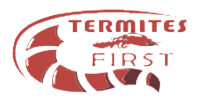
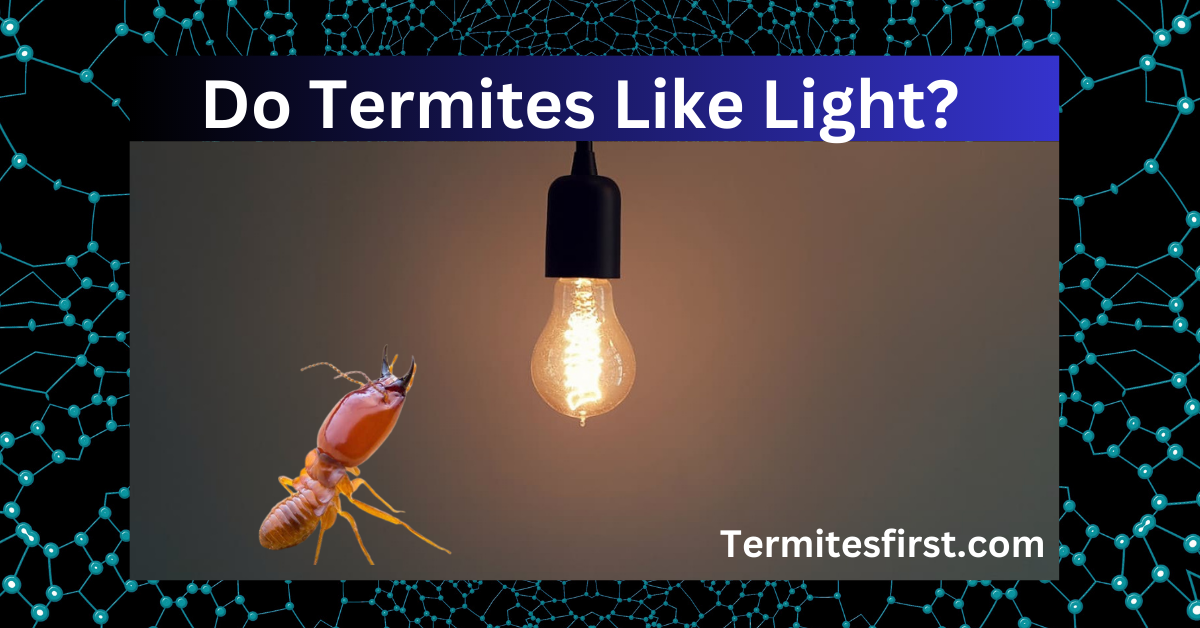

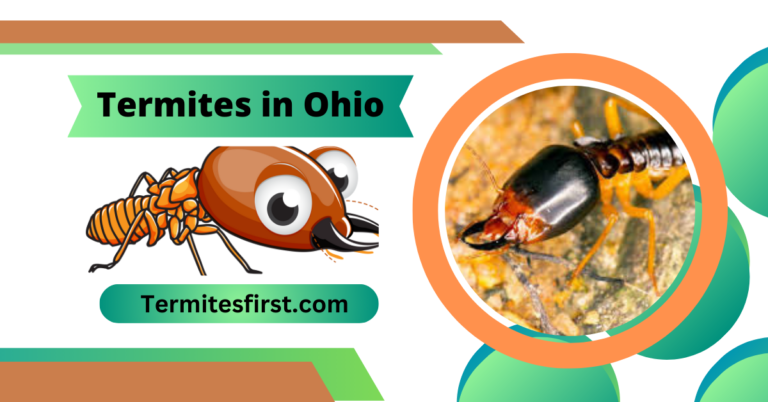
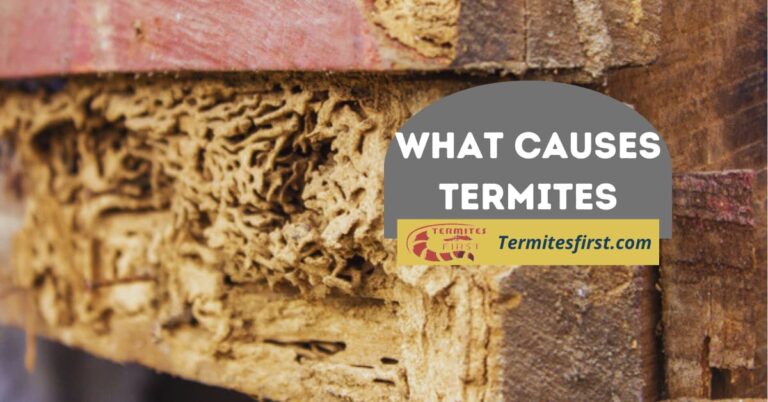
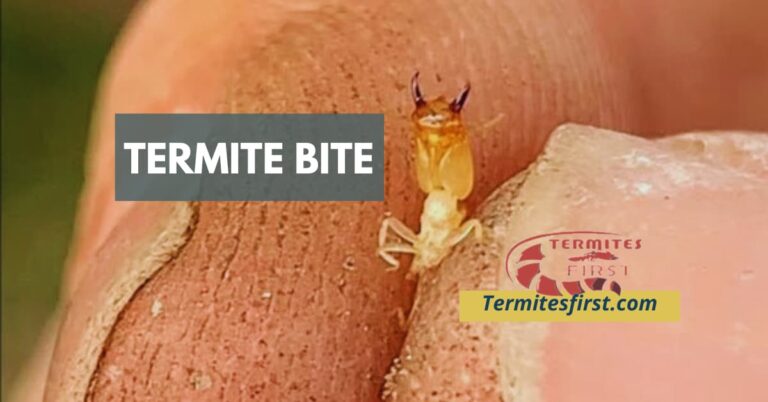
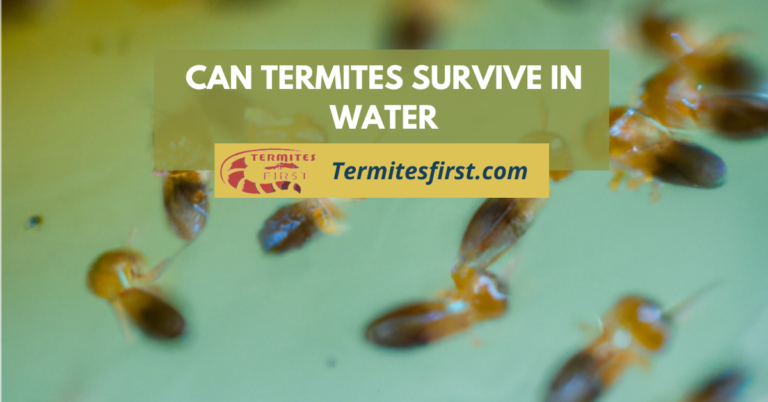
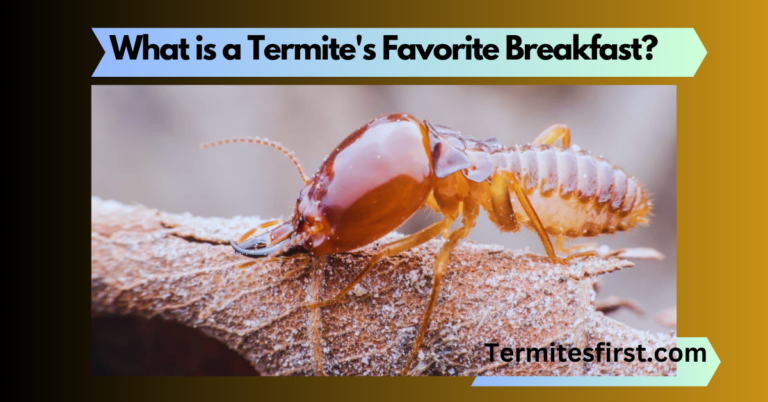
3 Comments